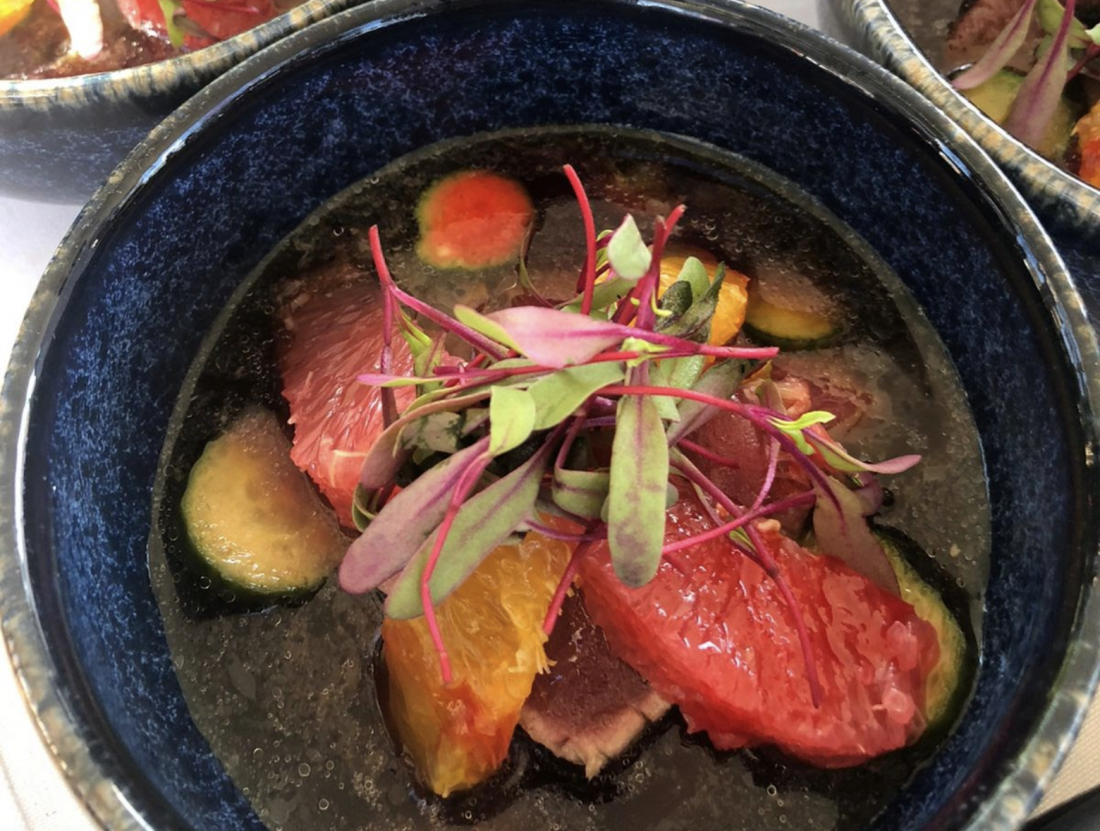
Maguro Tuna Dishes: How Can You Serve Them in Restaurants?
Photo from Bluefina
Originally Posted On: https://bluefina.com/maguro-tuna-dishes-how-can-you-serve-them-in-restaurants/
The appreciation for Japanese culture has taken over the world. From its traditional temples and shrines, kawaii culture, and even anime, the list goes on. However, if there’s one thing that Japan is most known for, it would be for its delicious food.
Despite Japan’s diverse and rich food heritage, it’s almost always associated with sushi. While sushi can be a hit-or-miss dish for some – it’s worth trying a variety of dishes and restaurants to gain a deep appreciation of how good it can be. If sushi is new to you, starting with maguro (bluefin tuna) dishes is the way to go.
For many, the best sushi dishes are those with maguro tuna. Whether it’s eating at fine sushi restaurants or recreating a dish at home, it’s something you should try. Read on to learn more about maguro tuna, and discover why it’s so revered.
Why Maguro Tuna?
Japanese businessmen have spent up to $1.8 million on maguro. What is maguro, you ask? Maguro means tuna, but there isn’t much debate about the term.
Professional chefs refer to bluefin tuna as maguro, though technically it applies to all species of tuna fish. This is a distinction you’ll find in the restaurant world especially amongst Japanese chefs.
Maguro comes in many cuts, with varying amounts of fat. Cuts from the upper back tend to be leaner, while cuts nearer the abdomen are fattier.
The three main categories are akami, chutoro, and otoro. Here’s a rundown on the different types and how to best serve them in restaurants.
Akami
Akami refers to leaner cuts of fish meat. It’s usually the most common that restaurants offer. Its extra meaty nature makes it a great choice on top of rice in sashimi or a sushi roll.
Senaka is the highest quality of akami, coming from the mid-back with a rich red color. Sekami is medium quality from the upper back. It contains some fat, while seshimo is the lowest akami, coming from near the upper tail.
Akami prioritizes meatiness, redness, and leanness. This means the paler and more fatty, the lower it scores. A great way to utilize cheaper cuts of akami is to take advantage of the striking coloring the fat gives it.
Seshimo, in particular, has stunning white streaks that run through the red. Here a clean presentation is best, making sashimi with accompanying pickled veggies preferable.
Another way to incorporate higher quality akami cuts is through the dish Tekkadon. It’s a basic donburi or rice bowl that packs a punch. The star of the dish is, of course, the tuna, flavored with some mirin, soy sauce, and sake.
This is then served on fresh vinegar rice and topped with some spring onions and sesame seeds. Variations of the dish incorporate some spice into it with the use of shichimi togarashi.
Chutoro
Chutoro is the medium fat cut of maguro, often considered a perfect blend of fatty and lean. It comes from the mid-abdomen, with haranaka being the highest quality. Harashimo comes from the lower abdomen and is of lower quality.
Harashimo is often used as filling in sushi rolls. However, you can also elevate and improve it. Do this by shredding or dicing it. An excellent recipe for harashimo is chutoro tartar with avocado and yuzu or sudachi.
Haranaka is fatty, juicy, and cheaper than otoro. A skilled chef can utilize it to wow patrons without the added costs of its pricy neighbor. One of our favorite ways to use it is making Aburi with basil risotto.
Flavored with some onions and garlic, this dish is quite delicate and fragrant. It also uses basil juice that’s pureed and strained. This makes it distinct from most other pesto dishes.
This juice is then added to arborio or carnaroli rice and cooked with vegetable stock. The haranaka is then lightly grilled and topped on the special risotto.
Otoro
Otoro is by far the fattiest and most flavorful part of maguro. It’s also the most expensive. Harakami, in the upper abdomen, is where the highest quality is, and it’s said to melt in your mouth. The name itself says it all with the “kami” of harakami means “god” – eating it is a divine experience.
It’s light, soft, and has the perfect texture. Many chefs and restaurants prefer to let otoro cuts stand on their own so that the patron can get lost in the flavor. Traditionalists argue sauces and seasonings detract from the enjoyment of Totoro.
New chefs have pushed back against this. Though not very common, grilled otoro with pumpkin puree is a delicious and creative option that’s worth the try. It starts with cutting the otoro into slabs and then skewering it to prep it for grilling.
It only takes about 45 seconds on each side, repeated about four times as you baste it with a sauce. It’s best not to overcook it! Like most traditional Japanese dishes, its sauce consists of soy sauce, mirin, rice wine, and sesame oil.
It’s then plated on top of some simple and savory pumpkin puree. Top it with a splash of soy sauce and lemon juice, as well as a little bit of salt for flavor.
Choose Only The Best Maguro Tuna
The best maguro sushi is right around the corner – the recipes for it are endless. It all depends on your creativity, willingness to innovate, and of course, high-quality maguro tuna. You don’t have to travel to Japan and do an all-out bidding war to get the best Bluefin tuna.
With Bluefiná, you’re guaranteed the highest quality, that’s sustainably-raised. Ask for Bluefiná bluefin if you want to have the very best. Find out more about our company, products, and how we can help you today. Contact us for any questions or more information.
